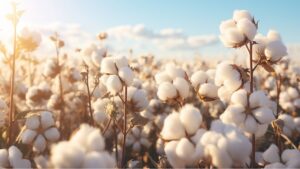
Woven products accounted for the vast majority of Bangladesh’s ready-made garment (RMG) export revenues until FY ’20, and they continue to dominate the global apparel industry.
However, beginning in fiscal year 2021, woven products began to lose their sheen.
In the first three quarters (July-March) of FY ’24, woven products increased by only 0.47 per cent year on year to US $ 16.19 billion, whereas knitted items increased by 9.79 per cent to US $ 21.01 billion, according to Export Promotion Bureau (EPB) data.
In the first nine months of this FY, such items posted year-on-year negative growth for three single months and were able to secure double-digit year-on-year growth just for a single month – July.
According to industry insiders, the woven sector has the biggest promise for them as western brands migrate their sourcing destinations away from China, with Bangladesh being their first priority, and the goods account for 72 per cent of global apparel trafficking.
However, due to back-to-back global economic crises, backward linkage, technological progress, skilled labour, and a lack of research and development, the country failed to capitalise on the opportunity.
The Bangladesh Garment Manufacturers and Exporters Association (BGMEA) has performed a study on manufactured fibres, and the findings reveal that if the country spends US $ 18 billion in this industry, it may generate an additional US $ 42 billion in non-cotton goods exports by 2032.
Another BGMEAresearch shows RMG products made from man-made fibres (MMF) will occupy 60 per cent of the global garment exports by 2030. Meanwhile, the global export of garments will grow to US $ 1,121 billion by 2030, compared to US $ 953 billion recorded in 2022.
BGMEA Vice President Abdullah Hil Rakib said, “There are three factors behind the sloth in export growth of woven products, and those run in parallel. Firstly, the global economy is not stable and that is why the order inflow is very favourable. Secondly, the sector’s raw material is import dependent, and thirdly, China is again focusing on the apparel industry.”
Rakib explained, “Our backward linkage investment is actually centred on knit, and investment here is multiple times larger than artificial or non-cotton fibre. However, our potential lies in synthetic fibre, and government funding is critical in this regard.
Woven garment makers stated that when the Covid-19 pandemic began, the world economy collapsed, having a significant impact on the poor and moderate-income parts of the population. The economic headwinds limited customers’ purchasing power.
When they tried to recover from the economic shock, they were further hampered by the ongoing Russia-Ukraine conflict and the Middle East crises. As a result, consumers are obliged to wear lower-value clothing.






